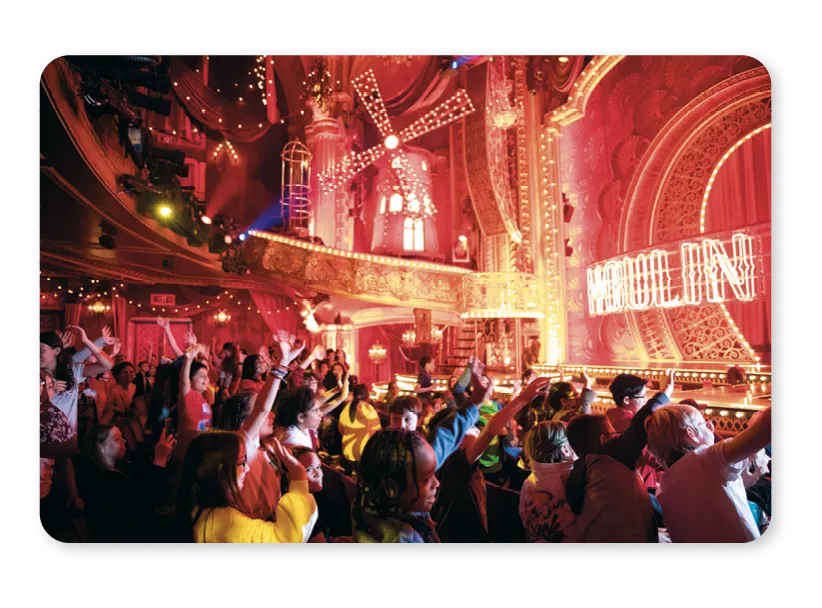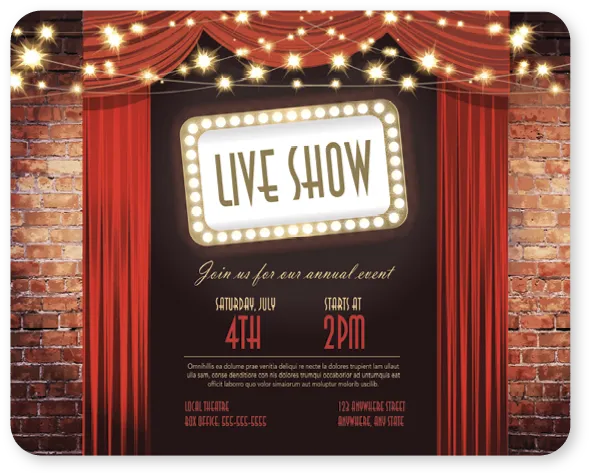Unit 15
Final Project
Ressource affichée de l'autre côté.
Faites défiler pour voir la suite.
Faites défiler pour voir la suite.
You and your friends are creating a musical representation based on stories like Peter and Wendy, A Little Princess or The Jungle Book. You've learnt about these stories and their background so that you could make your creation more adapted to our era. You are eager to imagine these creations which will be presented as soon as possible. How will you make these timeless tales resonate with today's audience? Get ready to promote them.
Ressource affichée de l'autre côté.
Faites défiler pour voir la suite.
Faites défiler pour voir la suite.
Pitch a musical adaptation of a story.
Your team is bringing a timeless classic to the stage with a fresh, modern twist! Prepare a two-minute pitch to convince a panel of producers that your adaptation deserves the spotlight. Highlight the key themes, setting, musical style, and one standout scene that makes your version unique. Be creative and persuasive!
Your team is bringing a timeless classic to the stage with a fresh, modern twist! Prepare a two-minute pitch to convince a panel of producers that your adaptation deserves the spotlight. Highlight the key themes, setting, musical style, and one standout scene that makes your version unique. Be creative and persuasive!


Ressource affichée de l'autre côté.
Faites défiler pour voir la suite.
Faites défiler pour voir la suite.
Let's do it!
- Go over your notes: review how classic stories have been adapted and transformed over time.
- Select one of the stories from the chapter or another classic tale from the colonial period: research its plot, characters, and colonial themes.
- Decide on changes: consider time period, setting, characters, etc. to make it relevant today.
- Visualise the world of your musical: will it take place in space? In the past? A parallel universe? Imagine the set design, costumes, and special effects.
- Cast your show: who would be the ideal actors, singers, and dancers?
- Incorporate music and dance: how will songs and choreography bring your story to life? Will there be a key theme song? A powerful dance sequence?
Ressource affichée de l'autre côté.
Faites défiler pour voir la suite.
Faites défiler pour voir la suite.
| Niveau 1 (A2) | Niveau 2 (A2+) | Niveau 3 (B1) | Niveau 4 (B1+) | |
|---|---|---|---|---|
| Réalisation de la tâche | Contenu très pauvre, hors sujet ou plagiat | Discours bref, des éléments descriptifs seulement | Présentation claire, quelques exemples pertinents | Présentation claire et argumentée, s'appuie sur des exemples pertinents |
| Prononciation, fluidité | Débit haché, prononciation francisée | Prononciation compréhensible mais francisée (-th,-h, diphtongues, etc.) | Prononciation globalement correcte, quelques erreurs ne gênant pas la compréhension | Prononciation correcte, intonation assez naturelle |
| Recevabilité linguistique | Langue très simple, beaucoup de calques du français, pas de réutilisation du vocabulaire et des structures | Phrases simples mais correctes, réutilisation du vocabulaire et des structures de l'unité | Syntaxe correcte, réutilisation du vocabulaire et des structures de l'unité fréquente | Peu d'erreurs, bon réemploi des structures et du vocabulaire de l'unité |
| Contenus culturels | Pas ou peu de contenu culturel | Quelques références à ce qui a été vu dans l'unité | Exploitation cohérente des contenus culturels de l'unité | Des références à l'unité et des connaissances personnelles |
Ressource affichée de l'autre côté.
Faites défiler pour voir la suite.
Faites défiler pour voir la suite.
➤ Choisissez un angle d'adaptation
- Modernisez ou transposez : voulez-vous garder l'époque originale ou situer l'histoire dans un autre cadre (futuriste, fantastique, contemporain, etc.) ?
- Changez de perspective : un personnage secondaire peut-il devenir le héros ? Peut-on raconter l'histoire autrement ?
- Réinterprétez un message : quel aspect du récit peut être réactualisé pour mieux parler au public d'aujourd'hui ?
➤ Intégrez la musique et la danse
- Définissez les moments clés où la musique est essentielle (introduction, climax, résolution, etc.).
- Pensez aux types de chansons : solo émouvant, numéro comique, hymne collectif, etc.
- Imaginez la mise en scène des danses et leur rôle dans la narration. Chaque chanson doit faire avancer l'histoire!
➤ Créez un univers visuel et sonore
- Réfléchissez aux décors, aux costumes et à la lumière pour renforcer l'ambiance choisie.
- Choisissez un style musical cohérent avec l'histoire (jazz, pop, hip-hop, orchestral, etc.).
Conseils pour présenter votre projet à l'oral
Imagine a world where...
This is what our musical brings to life!
What if the story took place in...?
Let us take you on this journey!
Mettez en valeur les moments forts
One of the most powerful moments is when...
The music here really enhances the emotions.
We chose this song/dance to reflect...
Concluez de façon convaincante
Our goal was to...
We believe this adaptation will...
Get ready to experience a story like never before!
Ressource affichée de l'autre côté.
Faites défiler pour voir la suite.
Faites défiler pour voir la suite.
Design a theatre programme.
Your musical adaptation is about to take the stage, and the audience needs a glimpse into the magic before the show begins! A theatre programme sets the scene, introduces the characters, and builds excitement. It should reflect the themes, mood, and unique vision of your adaptation while giving essential details about the production. Make it engaging, visually appealing, and informative. Something the audience will want to keep as a souvenir!
Your musical adaptation is about to take the stage, and the audience needs a glimpse into the magic before the show begins! A theatre programme sets the scene, introduces the characters, and builds excitement. It should reflect the themes, mood, and unique vision of your adaptation while giving essential details about the production. Make it engaging, visually appealing, and informative. Something the audience will want to keep as a souvenir!


Ressource affichée de l'autre côté.
Faites défiler pour voir la suite.
Faites défiler pour voir la suite.
Let's do it!
- Go over your notes: review how classic stories have been adapted and transformed over time.
- Select one of the stories from the chapter or another classic tale from the colonial period: research its plot, characters, and colonial themes.
- Decide on changes: what elements will you modify? Consider time period, setting, characters, or even the story's message to make it relevant today.
- Choose a name that captures the spirit of your adaptation and a catchy tagline to intrigue the audience.
- Write a short summary of the story, highlighting your modern twist.
- List the main characters and the actors playing them (real or imagined), as well as key production roles (director, choreographer, composer, etc.).
- Mention key songs or dances that define the show's atmosphere.
- Organise the information clearly: use visuals, fonts, and colours that match the tone of your production.
Une erreur sur la page ? Une idée à proposer ?
Nos manuels sont collaboratifs, n'hésitez pas à nous en faire part.
j'ai une idée !
Oups, une coquille
